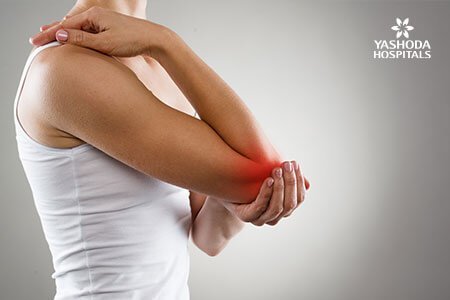Elbow Instability
Causes, Symptoms, Diagnosis,Prevention and Treatment
What is Elbow Instability?
It is a condition caused by looseness in the elbow joint that may lead to a catch, pop, or slide out of place during any movement of the arms. It usually occurs due to injuries such as an elbow dislocation. These types of injuries can lead to damage to the bone and ligaments that surround the elbow joint thereby affecting its stability.
There are three different types of elbow instability as explained below:
- Posterolateral rotatory instability: The elbow slides in and out of the joint as a consequence of an injury of the soft tissue lateral collateral ligament complex present on the outside of the elbow.
- Valgus instability: Instability of the elbow due to an injury of soft tissue ulnar collateral ligament located on the inside of the elbow.
- Varus posteromedial rotatory instability: The elbow slides in and out of the joint leading to a fracture. This is due to an injury to the lateral collateral ligament complex as well as the coronoid portion of the ulna bone present on the inside region of the elbow.





 Appointment
Appointment WhatsApp
WhatsApp Call
Call More
More

